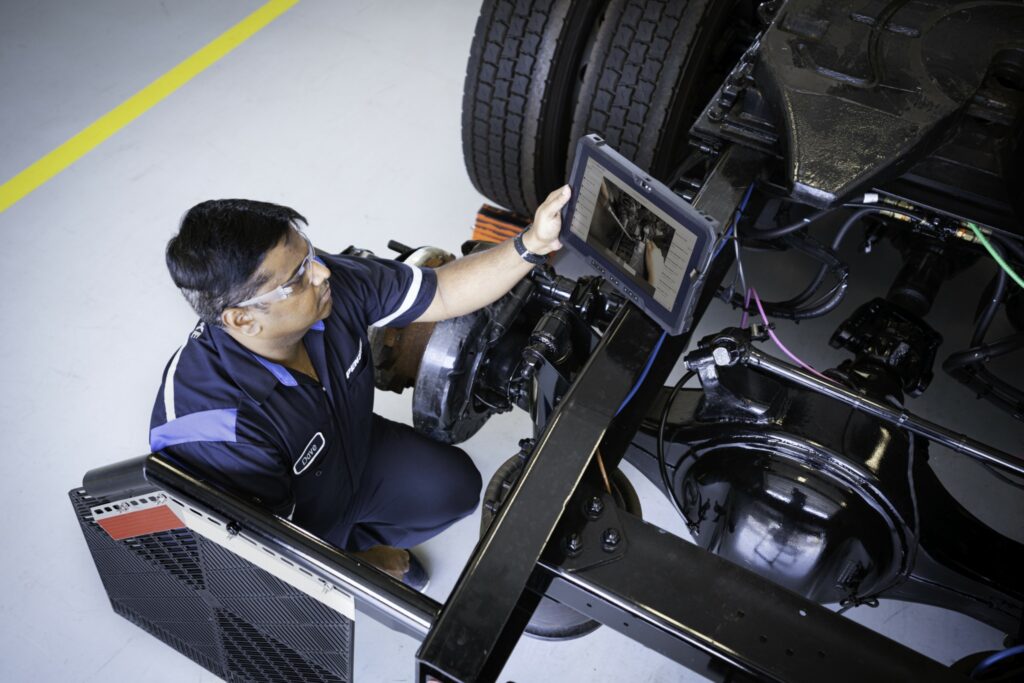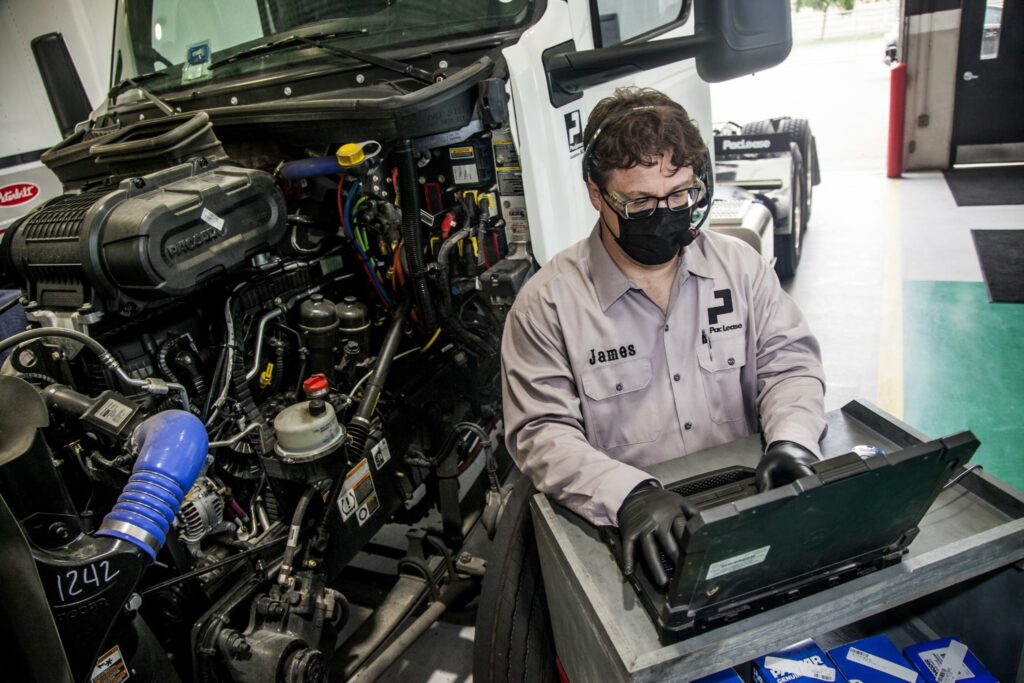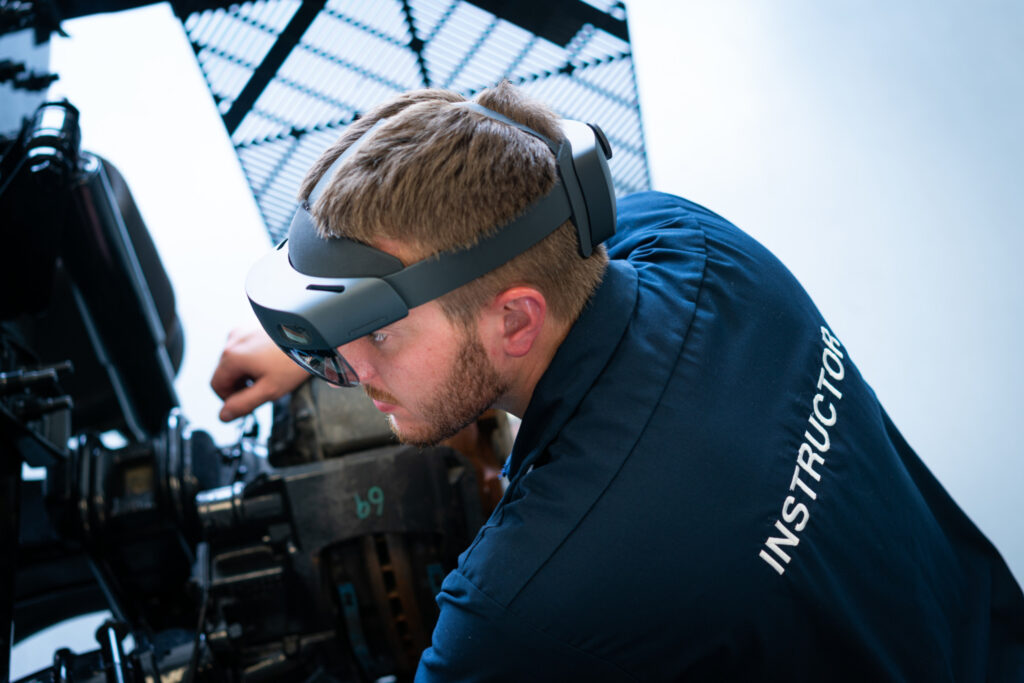Augmented reality, software help deliver next-generation training in the shop
As the underlying technology rapidly develops, a growing number of fleets are taking advantage of augmented reality and online training tools to train technicians quickly and efficiently.
Saving time and money is an obvious benefit, along with streamlining procedures and ensuring maintenance standards and benchmarks in the shop.

Penske Truck Leasing, for example, combines Microsoft HoloLens 2 hardware and Design Interactive’s Classroom XR and XRMentor. The XR Mentor software connects the trainer wearing the HoloLens2 with the trainees who could be at any Penske location, explains Holly Gerke, vice-president maintenance technical training and development. Training material is delivered through ClassroomXR.
It allows Penske to build out the experience and has all the elements that an instructor would use during an in-person training experience. Technicians in the service bay tap into diagnostic tablets, simulating the training they would receive with a trainer at their side.
Ten instructors are now using the system, and the company is on track to train 70 technicians per month on brake inspections, with a particular focus on entry-level new hires. About 1,000 employees will have been trained by June, Gerke explains.
The high-tech training approaches are not limited to Penske.
Paccar Leasing Company is now using a voice-guided preventive maintenance (PM) training system for new hires and technicians who move to a new location.

“If you take two technicians and put them on a PM, they are going to do the steps differently. With the voice-guided PM system, it standardizes the process,” says Willie Reeves, director of maintenance, Paccar Leasing Company. Its system consists of three modules, and teaches a sequence of steps around the truck to minimize steps in, out and around the vehicle.
Peterbilt, meanwhile, will have deployed 200 ARTech augmented reality tools to dealers by March 31.
Its system features proprietary software that displays 3D and augmented reality views of chassis-specific Peterbilt trucks. That helps technicians quickly visualize major truck systems and instantly access related technical documents, the company says.
“We analyzed technicians’ pain points and focused on key technologies required to put all of the correct and pertinent data from multiple databases in one single location at their fingertips,” Peyton Harrell, director of dealer development for Peterbilt, said in a media release.
“This technology provides technicians a type of X-ray vision to help improve diagnostic and repair times.”
Peyton Harrell, director of dealer development for Peterbilt
“The result is our ARTech tool, which transforms 2D technical information into a 3D image by placing full-scale objects on top of the real environment. This technology provides technicians a type of X-ray vision to help improve diagnostic and repair times. Dealerships who are using ARTech in their service bays have reported a 15-20% improvement in service repair times.”
Trying to develop technical skills using tools like PowerPoint and video is not an effective way to train technicians, says Penske’s Gerke.
“We tried it. It was just a flat experience, and that’s when we knew we had to take measured risk in investing in this technology. Learning about it, doing lots of repetitions with it, and doing it quickly so that we could continue with our training.”
Less walking
Paccar’s Reeves says benefits are realized across the board. The technology reduces the time it takes for a technician to conduct a PM. “We go through it with them doing the steps the right way. Using a clipboard and paper, it took techs almost four hours to perform preventive maintenance on a truck. If they do a couple of voice-guided PMs, then we’ve seen the PMs take between two to 2-1/2 hours,” he says.
Not only that, some components that were being overlooked are now being inspected, preventing failures down the road, he adds.
Reeves says the program also helps reduce stress that the techs feel from walking around. “In some locations we measure, the techs are walking an extra half a mile on a PM because they walk back and forth to their toolbox.”
If stuck on a step, the technicians simply say “details”, and the system walks them through what to do or look for.

Gerke says techs are excited to learn in this fashion. Even though the content is delivered remotely, it feels like a one-on-one training session. An individual at a truck, with their own tools, can connect with others in the same training session while completing tasks in a familiar environment.
Down the road, Penske plans to build out training content for different skills. Gerke says, “We are taking it one virtual step at a time to make sure we complete the current course we have with as many technicians as we can.”
It’s even mulling the use of such technology for monthly training sessions, perhaps with supervisors, and hoping to expand the audience.
Conveying information
Capturing and conveying the information becomes particularly important because many technicians are retiring and taking all their knowledge with them, he says. Support that connects technicians with each other supports the overall health of the organization.
The fleet has different types of units, configurations and components, and it’s almost impossible for a single technician to know everything. But in an ideal situation, techs would engage with one another and share insights after the initial training, Gerke adds.
Improving safety and efficiency in the process is icing on the training cake.
Have your say
This is a moderated forum. Comments will no longer be published unless they are accompanied by a first and last name and a verifiable email address. (Today's Trucking will not publish or share the email address.) Profane language and content deemed to be libelous, racist, or threatening in nature will not be published under any circumstances.